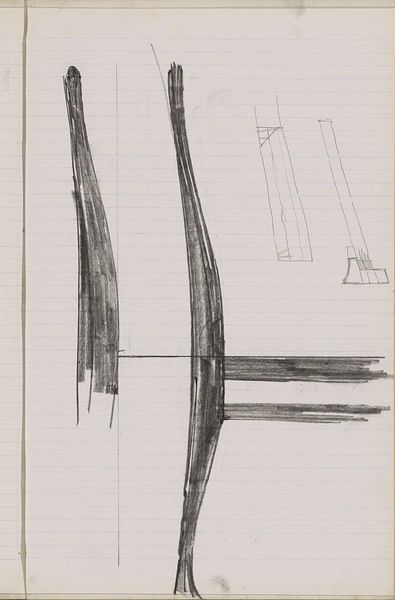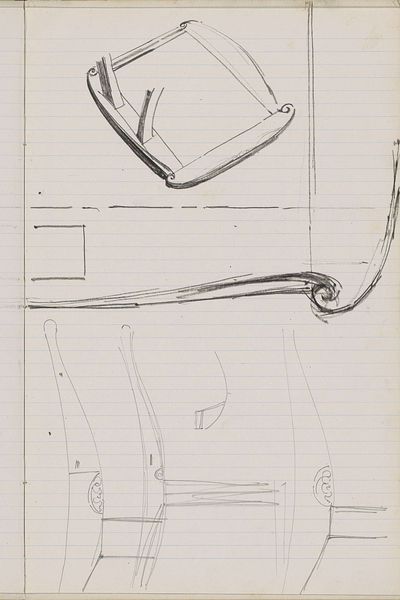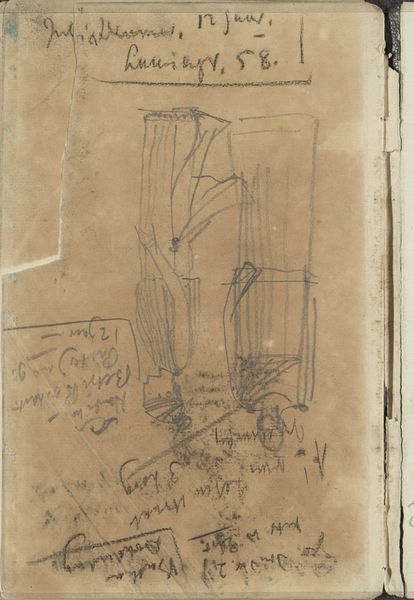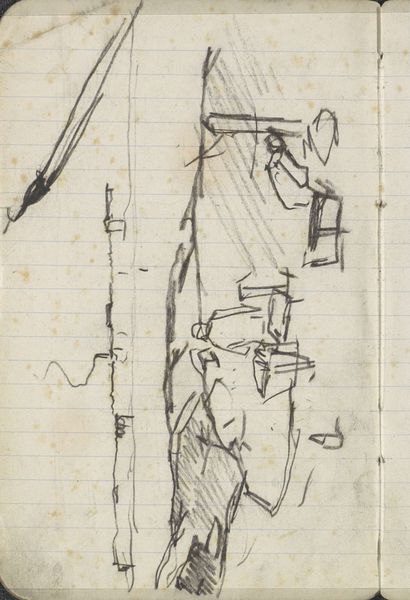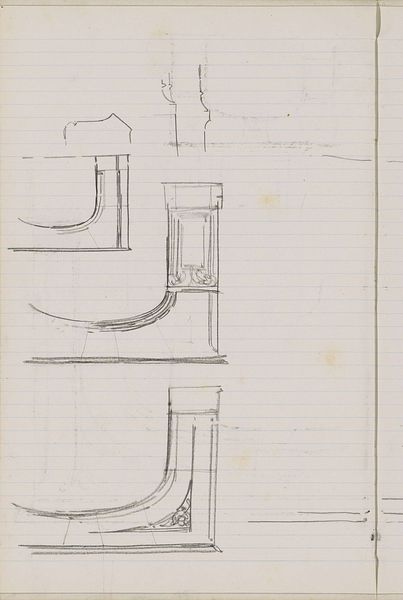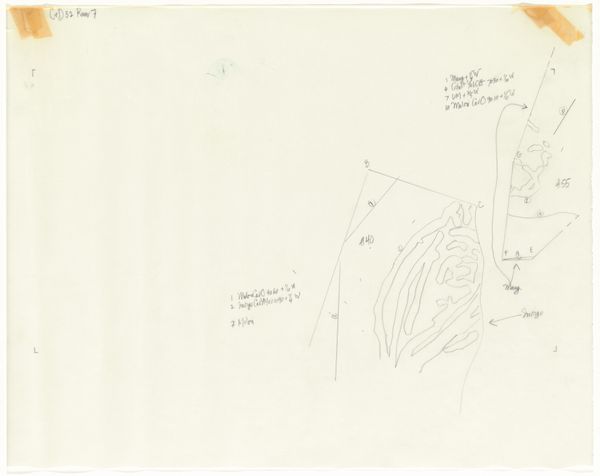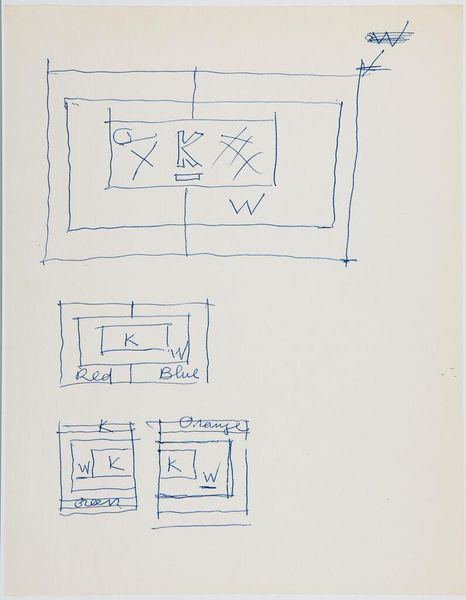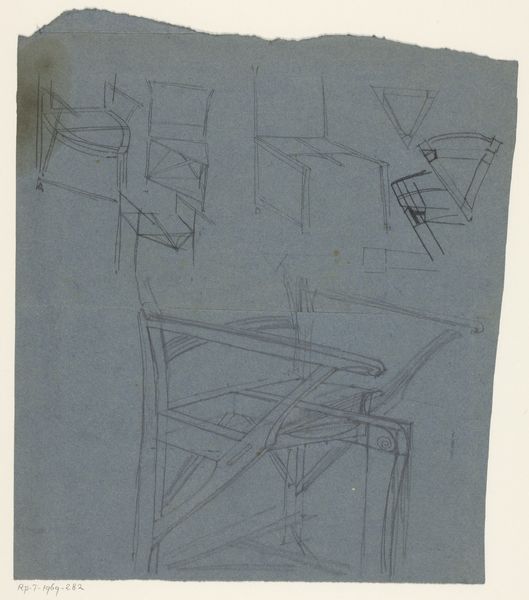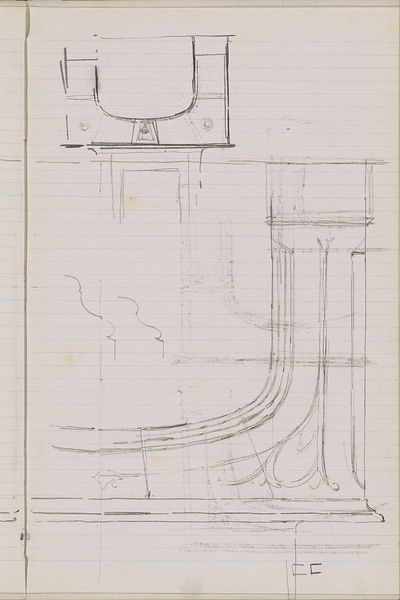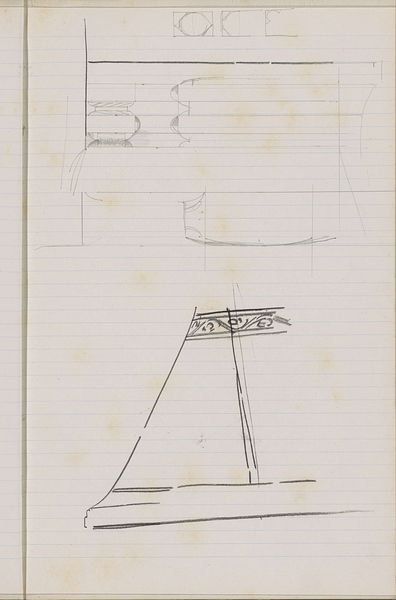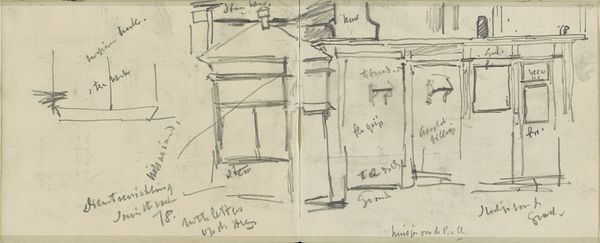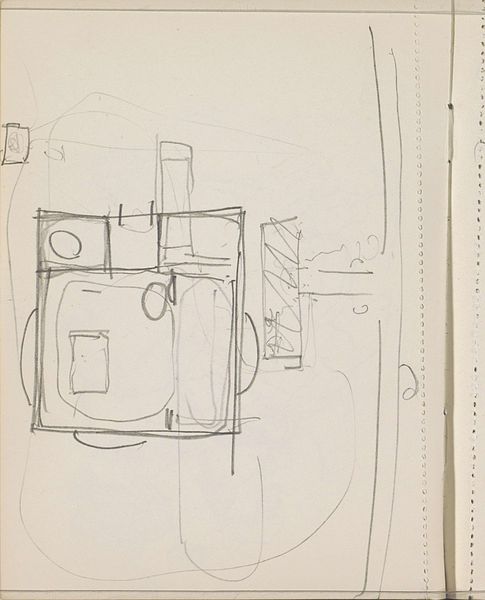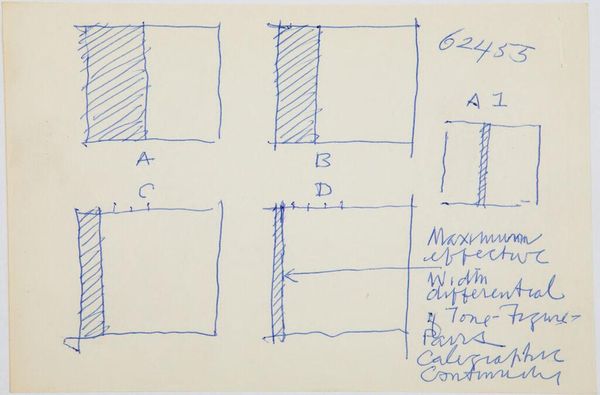
drawing, pencil, graphite
#
drawing
#
bay-area-figurative-movement
#
geometric
#
pencil
#
graphite
Dimensions: sheet: 22.5 x 15.2 cm (8 7/8 x 6 in.)
Copyright: National Gallery of Art: CC0 1.0
Curator: Richard Diebenkorn's "Drawing for High Green I & II," created in 1992 using pencil and graphite on paper. It feels…fragmentary, doesn't it? Editor: Yes, utterly so! I’m immediately struck by this incredible intimacy. It’s like glimpsing into the artist's raw thought process. What’s immediately noticeable is the visible, ruled paper underneath – like peering into his sketchbook! Curator: Exactly. The notations on the page… “red oxide,” “indigo,” these are almost like ancient alchemical instructions. He's marking more than colors— he's suggesting the character of a space yet unformed. The diagrammatic elements speak to a language beyond pure representation. It's symbolic, almost coded. Editor: I read it differently. Look at "ground plane done in sections"—that's the language of urban planning. The "High Green" paintings are, in a sense, Diebenkorn engaging with spatial politics, reclaiming open spaces conceptually, at least on the canvas, against the encroachments of development. Curator: That's interesting! It definitely brings forward a discourse about reclaiming spaces… The recurring geometric shapes—squares, rectangles…They do resonate with urban landscapes…But also hint at timeless architectural forms, echoes of sacred sites distilled into pure design. Editor: There’s a push and pull happening: a conscious navigation between spontaneity and structure. What makes it contemporary is that it exposes the creative negotiation, the unresolvable tension between a modernist urge for clarity and a postmodern acknowledgement of uncertainty. It gives us permission to challenge assumptions. Curator: Indeed. And those faint pencil lines… They whisper of the ephemeral nature of ideas, the fleeting quality of inspiration… The paper support becomes, in this instance, more than just a means for executing a study; it is the repository for something just beyond reach. Editor: What this drawing truly reflects, for me, is the tension of existing at a particular point in history—Diebenkorn grappling with his place within this legacy and wrestling against a blank canvas for both spatial and societal possibilities. Curator: Beautifully articulated. Thank you, this has revealed an enriching dimension within the work that will certainly bring much for audiences to consider. Editor: The pleasure was all mine; there is so much to appreciate once you start deconstructing layers of what you perceive is being communicated with simple geometric lines.
Comments
No comments
Be the first to comment and join the conversation on the ultimate creative platform.
